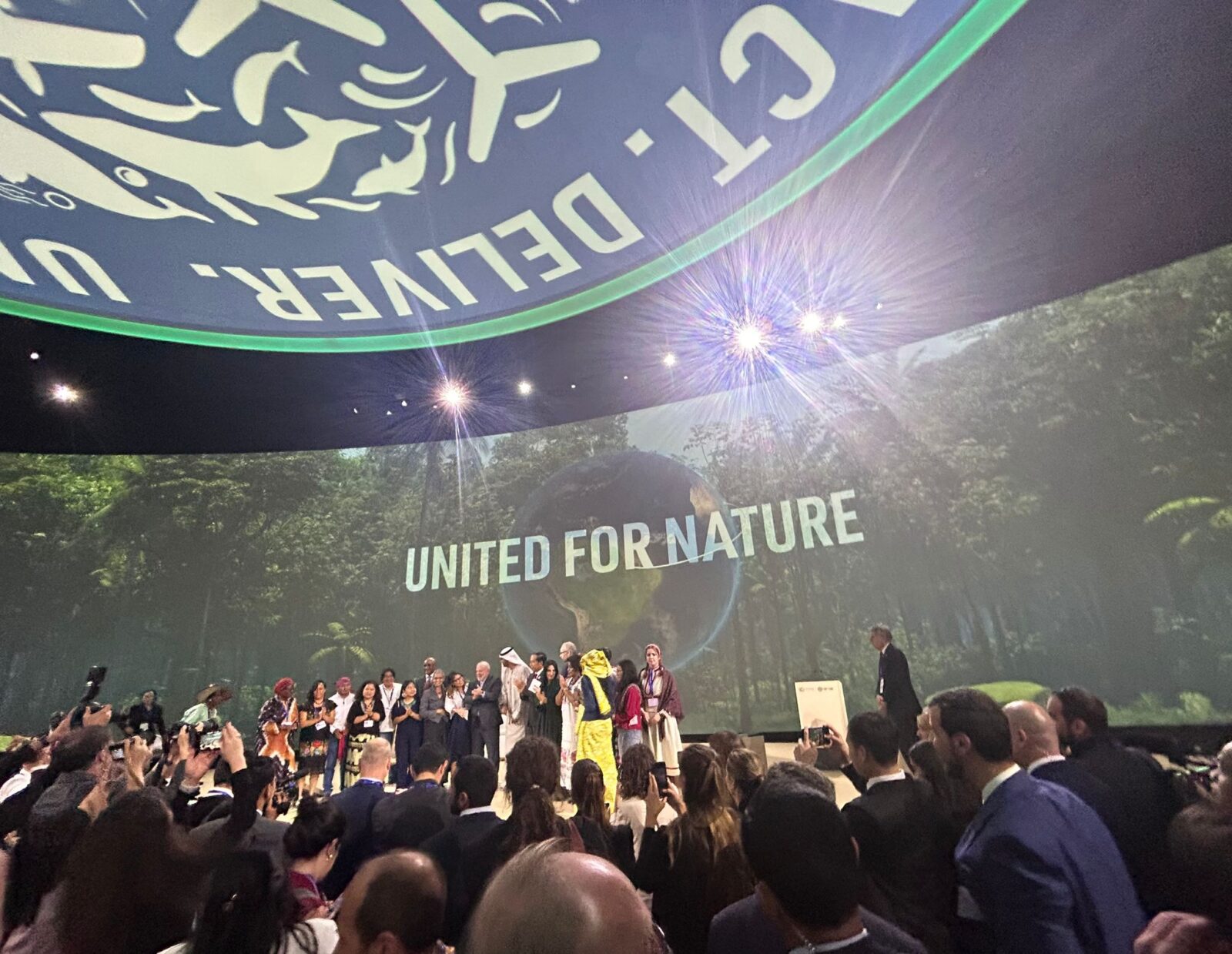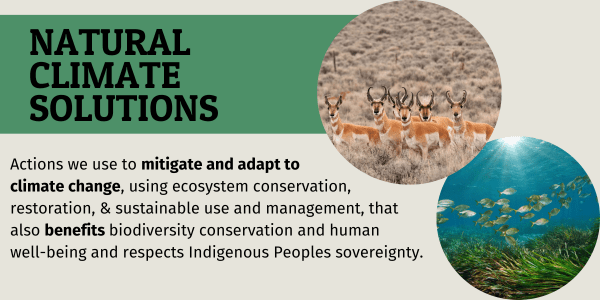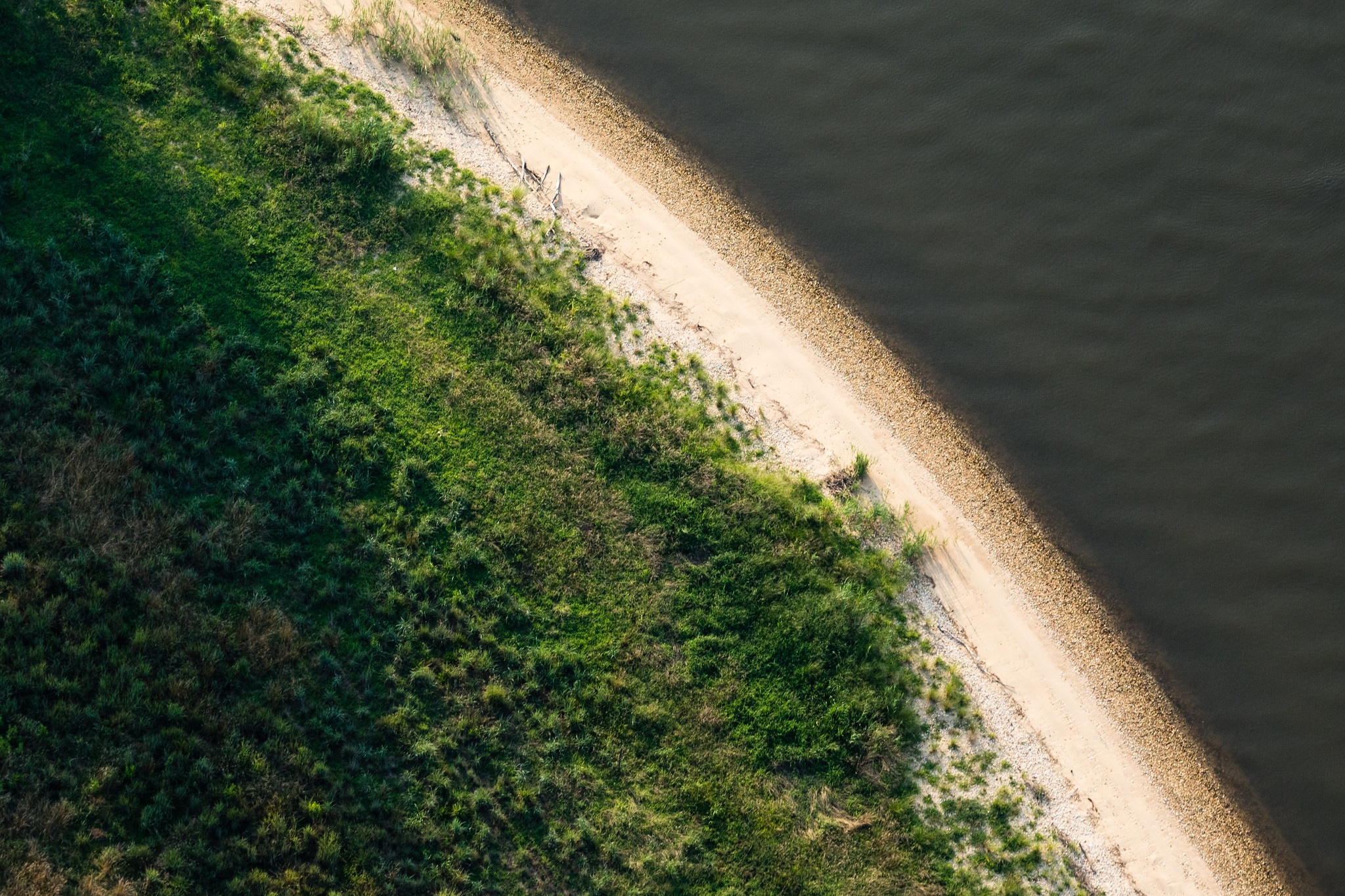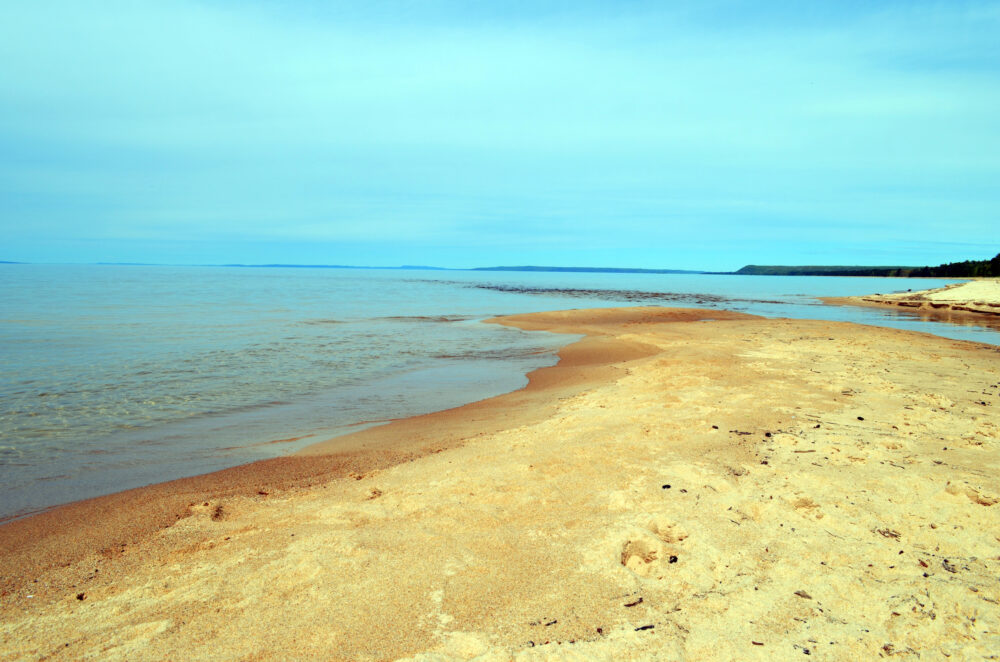We have much more to do and your continued support is needed now more than ever.
Harnessing the Power of Nature at COP28

Delegates from around the world gathered in Dubai this month for the United Nations climate change negotiations, called COP28. They had plenty to discuss: from assessing progress toward the world’s greenhouse gas reduction targets to the need to quit using fossil fuels to the yawning gaps in financing for developing countries already severely impacted by climate change.
One major element of this year’s talks was the “Global Stocktake,” an inventory of what countries around the world have promised to do in response to climate change, how much progress they’ve made so far, and whether or not the world is on track to avoid catastrophic levels of warming. Think of it like a health exam for the planet.
As the world takes stock of progress, one thing is already certain: we won’t be able to reach our goals without reconsidering our relationship with nature. Currently, the world spends three to seven times more on subsidies for activities that harm nature than help it. We are also facing a biodiversity crisis, with extinctions occurring at a rate tens or hundreds of times greater than average rates in the last 10 million years. Habitat losses continue despite a new pledge to end global deforestation and forest degradation by 2030, with deforestation rates last year remaining far higher than needed to be on track for that goal. The Great Plains lost 1.6 million acres of grassland in 2021.
Although these trends may be disheartening, it is not too late to change direction. Healthy ecosystems, sustainable food systems, natural infrastructure, and biodiversity aren’t just “nice to haves” – they are essential to achieving the world’s goals to prevent and adapt to climate change, as well as our goals for human health and well-being. Our fate is intertwined with the lands and waters we love and with the life that inhabits them.
At COP28, world leaders have the opportunity to acknowledge the urgency of our situation. Every day we continue to emit planet-altering greenhouse gases, we bring ourselves closer to irreversible damage and even more extreme weather like deadly heat waves, wildfires, and floods. Leaders must be bolder than ever and double down on the natural climate solutions we know work.

What are natural climate solutions?
Natural climate solutions are actions that help to mitigate or adapt to climate change by protecting, conserving, restoring, sustainably using, or modifying ecosystems, from forests to grasslands, marshes to marine areas, and beyond.
This makes them a subset of a broader group of actions, known as “nature-based solutions,” which the International Union for the Conservation of Nature (IUCN) defines as “actions to protect, sustainably manage, and restore natural and modified ecosystems that address societal challenges effectively and adaptively, simultaneously benefiting people and nature.”
Not every action involving ecosystems can be described as a nature-based or natural climate solution. Even well-intended actions such as tree plantings to remove carbon from the atmosphere could have negative impacts on native ecosystems or local communities, for example, if the trees planted are not native to the area and outcompete native vegetation. By definition, these actions must not cause harm and instead must provide benefits to human well-being and to biodiversity. The IUCN also provides further guidance: for example, planning and undertaking nature-based solutions must be transparent and inclusive, must be suited to community needs, and must uphold the rights of Indigenous Peoples to free, prior, and informed consent (FPIC). In short, these activities must be thoughtfully planned and carefully carried out and monitored.

Natural climate solutions are a cost-effective way to curb climate change that also have countless co-benefits for people, wildlife, and the planet including improved air and water quality, recreational opportunities, and job creation. In part two of this series, we’ll explore how we can use natural climate solutions to prevent and reduce greenhouse gas emissions and how safeguarding biodiversity is a key component.





















